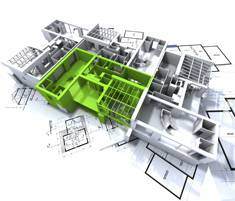“Who likes money?”
It sounds like a cheesy line you’d hear watching a late night infomercial when you’re having trouble sleeping.

Hopefully most business owners would agree that they like money and are trying to conserve more of their funds to help grow their businesses and increase their personal wealth.
One commonly overlooked tool that has the potential to save a considerable amount of money is a cost segregation study.
When acquiring an existing building or constructing a new one, cost segregation is a technique used to maximize your tax deductions from the acquisition.
Rather than merely purchasing real estate and depreciating it over 39 or 27.5 years (excluding the allocation of land), cost segregation allows business owners to increase their tax deductions by shortening the depreciation life of certain categories of assets.
There are two general components of separating real estate costs: tangible personal property and real property.
Tangible personal property generally includes equipment, furniture, fixtures and carpeting that can be moved with certain ease, without damage or compromising the asset’s integrity. These personal property items can be depreciated over five, seven or 15 years of useful life, thereby accelerating the depreciation deductions and potentially reducing taxable income for the business owner.
This asset classification also could have further tax deductions through the use of Section 179 expense or bonus depreciation.
The second component, real property, consists of assets that are structural and affixed to the real estate that are permanent and unable to be relocated. Real property is depreciated over the use life of 39 years for standard commercial real estate or 27.5 years for residential real estate.
What are the potential benefits?
Consider this: Every $100,000 in assets reclassified from the 39-year recovery period to a five-year recovery period creates approximately $16,000 in net-present-value savings (assuming a 5 percent discount and using a 35 percent marginal tax rate).
And this example does not consider the benefits of including a Section 179 election.
Generally, a trade or business with taxable income is permitted to make a Section 179 election to the extent of that income and immediately expense certain personal property acquisitions obtained in that same year.
However, the election does have potential limitations based on asset acquisition thresholds, specific types of assets and possible exclusion of certain rental properties.
Cost segregation studies do more than merely accelerate depreciation and reduce taxable income. Reclassifying assets in different categories creates additional cash flow for the business owner by having a lower potential tax liability. This allows the owner to consider other uses for this new-found cash flow, such as purchasing more assets to increase efficiencies or making additional investments to allow expansion of the business.
Most people consider cost segregation to be relevant only when purchasing real estate but, in fact, a study could be conducted years after disposing of real estate as long as the tax year of disposition still falls within the statute of limitations. Furthermore, by separating building components, if a specific portion becomes obsolete or worthless, these studies help justify the need for disposing of them.
How does a cost segregation study work?
Generally, a brief analysis should be done to determine the potential cost and benefit of a cost segregation study. This could consist of discussions with the proper engineering specialist, the CPA and business owner. These preliminary communications provide a snapshot of what would be entailed in a cost segregation study.
If the initial assessment shows a cost segregation study would be beneficial, and the business owner agrees, the engineering specialist begins identifying and separating the elements pertaining to the real estate in various asset classes.
Usually, the engineering report segregates assets into four categories:
- Personal property
- Land improvements
- Buildings
- Land
The categories may be broken down into even more subcategories.
From this, an engineering report is created, and the engineering specialist and the CPA work together to determine how to reclassify assets into the proper asset classes.
Once the due diligence is completed, a strategy for implementing the study is put in place. The asset classifications are developed with the proper depreciation methods for both tangible personal and real property calculated. The potential increase in depreciation deductions should reduce the business owner’s tax expenditures.
Unfortunately, business owners often either ignore or simply presume cost segregation studies merit minor benefits, without considering the long-term financial aspect.
Maybe there are business owners who are content with what they have and aren’t focused on increasing their wealth by considering a cost segregation study. After all, who likes money anyway? – Philip Jackson, CPA



